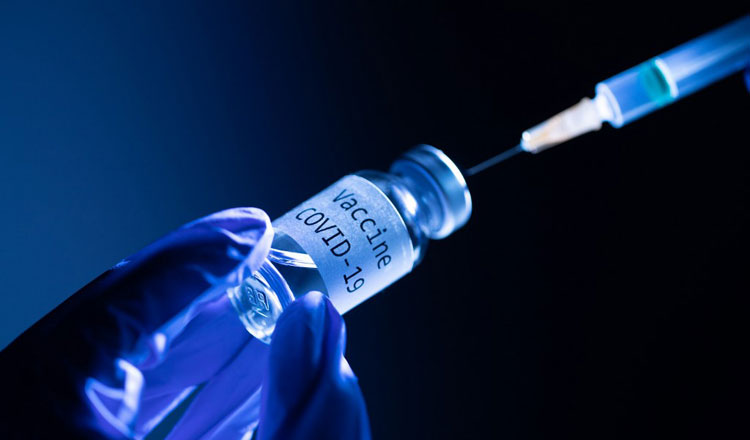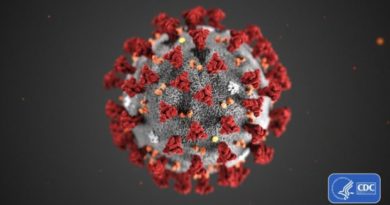COLUMN-OPINION: News on Covid-19 vaccines is encouraging. But the devil remains in the details
.
As the global toll of Covid-19 touches 58 million confirmed infections and almost 1.4 million deaths, events of the past week have infused new optimism about the possibility of using vaccines to control the pandemic. The BioNTech-Pfizer vaccine and the one from Moderna reported about 95 per cent success in large Phase 3 efficacy trials. Though Russia’s Sputnik V vaccine also claimed 92 per cent interim efficacy, it was largely ignored as the data was based on only 20 infections — the BioNTech-Pfizer and Moderna results were based on 170 and 95 infections, respectively. Finally, results from the Oxford-AstraZeneca vaccine Phase 2 trial published in The Lancet showed robust anti-viral immunity, even in those over the age of 70. The interim Phase 3 results for this vaccine released on November 23 showed 90 per cent efficacy for a lower dose and only 62 per cent efficacy for the higher dose, but still crossed the threshold of 70 per cent overall efficacy.

These results bode well for other vaccines in the development pipeline. They tell us that a vaccine based on just a small part of the virus, the Spike Protein, will effectively protect from infection. It does not matter whether a piece of ribonucleic acid (RNA) is delivered to human cells to be “translated” into the Spike Protein, as in the BioNTech-Pfizer and Moderna vaccines, or a viral vector is used to deliver the DNA for this protein into human cells as in the Oxford-AstraZeneca and Russian vaccines. It used to take 10-20 years to develop and test vaccines in pre-Covid times. But in less than a year, there are 164 candidate Covid-19 vaccines in pre-clinical evaluation and 48 in clinical evaluation, of which 11 are undergoing Phase 3 efficacy testing. This requires coordination at multiple levels — nationally and internationally, between funders, researchers, manufacturers, trial managers and regulators — something that has also happened at great speed and sets the benchmark for developing vaccines against future diseases.
.

But there is also a need for caution. High levels of safety and efficacy in a large and diverse volunteer population are still based on short-term analyses, without having gone through either a longer follow-up or the scrutiny of peer review. For various reasons, efficacy usually drops when vaccines move out from controlled conditions of a trial into the field. One important reason for this is the inability to maintain cold chains. The BioNTech-Pfizer vaccine requires ultra-low storage temperatures of minus 70-80 degrees Celsius; that poses a significant storage-transport-delivery challenge. The Moderna vaccine claims to be stable for up to 30 days in the refrigerator at 2-8 degrees Celsius but would still require shipping and long-term storage in the freezer at minus 20 degrees Celsius. This would be a challenge for most countries. Almost all the Covid-19 vaccines under development will face this challenge. The longevity of protection is another unknown due to the short duration of follow-up in all trials.

There are also questions of access and equity. How much vaccine can be produced, for whom and at what cost? Pfizer has indicated that it can supply 50 million doses by the end of the year and another 1.3 billion doses in 2021. The US government’s Operation Warp Speed has promised Pfizer $1.95 billion to provide 100 million doses, which means the company’s entire capacity for 2020 and another 50 million, possibly in early 2021. Moderna has said it would increase capacity to make 500 million to 1 billion doses from 2021. It received development funds from the US government and a $1.5-billion order for 100 million doses, which includes 20 million doses by the end of 2020. Several high-income countries have pre-booked an estimated 8.8 billion doses of Covid-19 vaccines, in some cases several times of their population size. For example, for a 66.8 million population UK has pre-booked 325 million vaccine doses, including 100 million doses of the Oxford-AstraZeneca vaccine. For its 25.5 million population Australia has pre-booked 33.8 million doses.
.

Where does this leave India with a high population density and high numbers of infections? Fortunately, India is in a good position, largely due to its vaccine manufacturing capacity — about 3 billion doses of which 1 billion is used domestically and 2 billion exported. Though there are no agreements to test or manufacture the Pfizer-BioNTech and Moderna vaccines here, India is currently testing three other vaccine candidates – the indigenously developed inactivated vaccine, Covaxin, from a partnership between the Indian Council of Medical Research and the Hyderabad-based Bharat Biotech, a DNA vaccine from Ahmedabad-based Zydus Cadila, called ZyCov-D, and the Oxford-AstraZeneca vaccine manufactured in India by the Pune-based Serum Institute. Clinical trials on two viral vector vaccines are also set to start – one from Russia to be manufactured by Hyderabad-based Dr. Reddy’s Labs and another developed by Johnson & Johnson to be manufactured by the Hyderabad-based Biological E.
.

The Union Minister for Health and Family Welfare has stated that India will vaccinate 250 million people by 2021, which would mean 500 million doses. The prioritisation should be based on three aims – protect frontline workers, reduce mortality and control the pandemic by way of herd immunity. So, the priority should be healthcare, security and sanitation workers, the elderly and those with comorbidities. If 60 per cent coverage is needed for herd immunity, India will have to vaccinate about 800 million people, requiring 1.6 billion doses. Bharat Biotech has stated that it has an annual capacity of 300 million doses that can be increased to 500 million. The Serum Institute is estimated to have an annual capacity of about 800 million doses, of which 50 per cent would be available for India, with the rest heading to COVAX, the international alliance that provides vaccine access to low-and-middle-income countries. With an annual contribution of 400 million doses from Serum Institute, 300 million from Bharat Biotech and 100 million from Zydus Cadila, India would have enough to cover 60 per cent of the population in two years.
.

Since a vaccine is not expected to offer better protection than natural infection, it would make no sense to vaccinate those already infected — this would waste precious doses. Based on various sero-surveys, India may already have an estimated 135 to 150 million infections, a majority of them asymptomatic with most not even aware of their status. This brings in the element of testing for antibodies before administering vaccines. This cost must also be factored into the cost of vaccination. The Serum Institute plans to sell the Oxford-AstraZeneca vaccine for Rs 225 per dose. Antibody tests in India are currently priced in the same range — this effectively doubles the cost of vaccination. India would need up to Rs 22,500 crore to Rs 72,000 crore to vaccinate 250 million to 800 million people. To put this in perspective, in 2020-21 the Ministry of Health and Family Welfare received a budgetary allocation of Rs 67,112 crore.
While news from the past week is encouraging, the devil remains in the details.

This article first appeared in the print edition on November 24, 2020 under the title ‘Before the cure’. The writer is a virologist and director, Trivedi School of Biosciences, Ashoka University. The Indian Express
.


.
SIGN UP TO RECEIVE OUR EMAIL
.
The most important news of the day about the ASEAN Countries and the world in one email: [email protected]











